5 Tips for Running a Social Skills Group (Ages 7-11)
Last year, my special education teacher and myself ended up running 3 different social skills groups. They were separated by grade level for scheduling reasons, and each had five students. That’s fifteen social skills students on IEPs in an elementary school! We met on Fridays in the special education classroom. I provided the materials and lesson plan. Although one entire group was fifth graders and they are moving onto middle school, we recently found out that we will have just as many kids replacing them. So, in addition to 5 Tips for Running a Social Skills Group (for kids 4-7), I need to get ready for this year by coming up with tips for working with older elementary students.
1. Encourage students to be a team.
Students can feel like a team if they are encouraged. They can develop a team name, team picture, or team flag. Trust and friendship will help them both inside and outside of the social skills group.
2. Engage students with fun materials.
Last year a teacher emailed me to say that her students (she taught in a classroom for children with ASD), were so enamored by Super Social Skills, that they made it their classroom theme for the year. They even designed shirts as a fundraiser for their class and school. Of course, I had to purchase some! These kids were engaged! Learning is so much more fun when you are interested. (Click on the picture to see the image larger and read the inside of the shirt label!)
3. Give students tools to self-regulate.
Consult with your Occupational Therapist on these self-regulating skills. When students understand their own bodies and needs better, they can show more empathy and understanding of others. Some great tools that we have used in my school are: Zones of Regulation, S’cool Moves, and How Does Your Engine Run. (Pictured below are posters from Zones of Regulation)
4. Practice, Repeat, Practice, Repeat.
According to a study by Lally (2009), it takes 66 repetitions for a typical learning adult to form a new habit (see article here or study abstract here). That means that if we want our students to form habits of automatically greeting, eye contact, or making small talk, they have to practice. A lot. If your social skills group meets once per week for a school year, you still won’t have all 66 repetitions in for a habit to develop. Take opportunities outside of the social skills group to practice as well (in the classroom, in the hall, out at recess).
5. Use Visuals.
Yes, even older students need visuals. These do not need to be in the form of clip art. They can be written visuals, or (my favorite) photographs/videos! Taking pictures and videos of students engaged in a desired activity or feeling can be powerful for the student, the teacher, and others that see the image/firm (teachers, parents, etc.). Visuals are ideal for expectations, goals, schedule, or new skills. The image below shows the visuals that will be displayed in my classroom to emphasize the speech rules and goals for the year (these are available for purchase here).
And… with all these tips in mind, I have created a full social skills curriculum for 7-11 year olds!!!
It’s here at last! My new baby (product) has entered the world, and it is a BIG one. Over 300 pages, this one is intended to last at least a year for forming and improve social skills and self-regulation.
Included in this product are 40 (yes FORTY) lessons designed to last 30-60 minutes each for students with language levels in the 2nd to 5th grade range.
This social skills curriculum is designed to work on social skills and self-regulation skills. The age range intended for these lessons is students with language levels at the second to fifth grade level. The lessons are intended for small groups of three plus students, although they can be adapted to work with an entire classroom. Each lesson contains three activities. Lessons are designed to take 30—60 minutes each, however, activities can be taken away or added to adjust the time. In addition, unfinished lessons can be continued onto the next session if needed.
The goals of this program are:
- Identify needs (self regulate through energy levels and sensory tools)
- Understand thoughts (understand own thoughts and the thoughts of others)
- Understand feelings (understand own feelings and the feelings of others)
- Problem solve (problem solve social situations)
Activities to work on these goals include:
- Direct instruction
- Group brainstorming
- Crafts
- Charades
- Games
- Role-plays
Lessons are in groups of five focusing on 2 opposing emotions. Screen the students at the beginning of the year to determine the most appropriate lessons to use.
Feelings focused on to understand self and others include 5 lessons each for:
- Sad/Happy
- Tired/Awake
- Frustrated/Calm
- Scared/Brave
- Bored/Interested
- Hyper/Quiet
- Angry/Relaxed
All lessons are available in black/white for easy printing and include:
- Teacher Summary/Checklist of the lesson
- Visual schedule for students
- 3 Activities with materials (except art supplies)
See the materials up close and personal in this video!
You seriously do not want to miss out of this curriculum. It will make your life so much easier this year!!
Click here or on the image below to purchase your copy!
Wondering how to informally assess your students with social communication difficulties? Check out my post about the Social Language Informal Assessment.
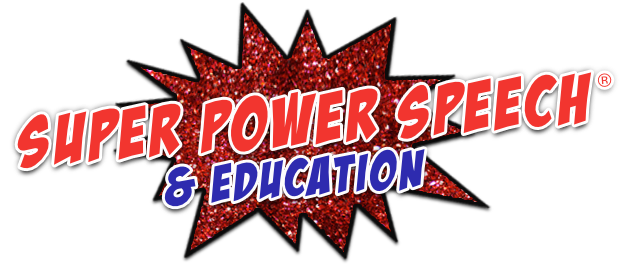
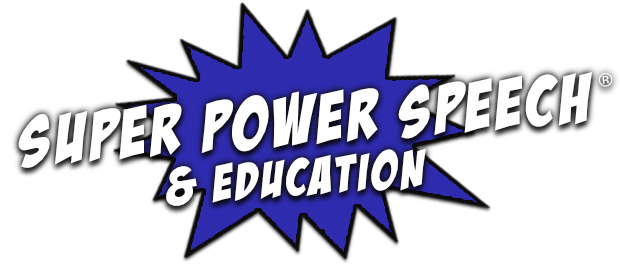

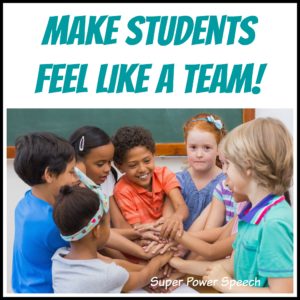
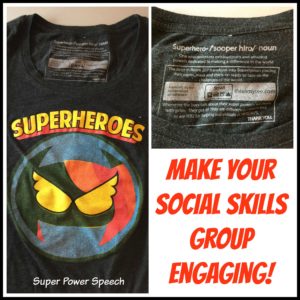
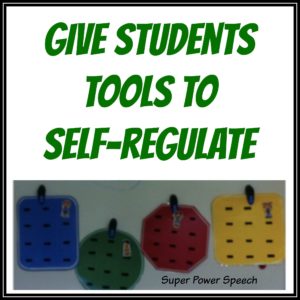
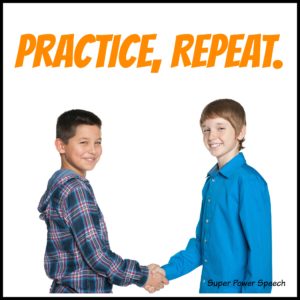
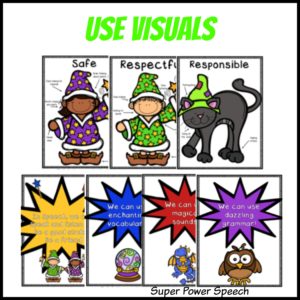
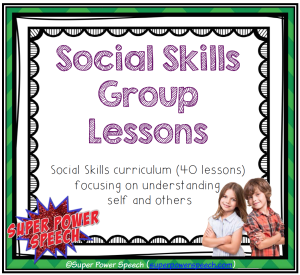
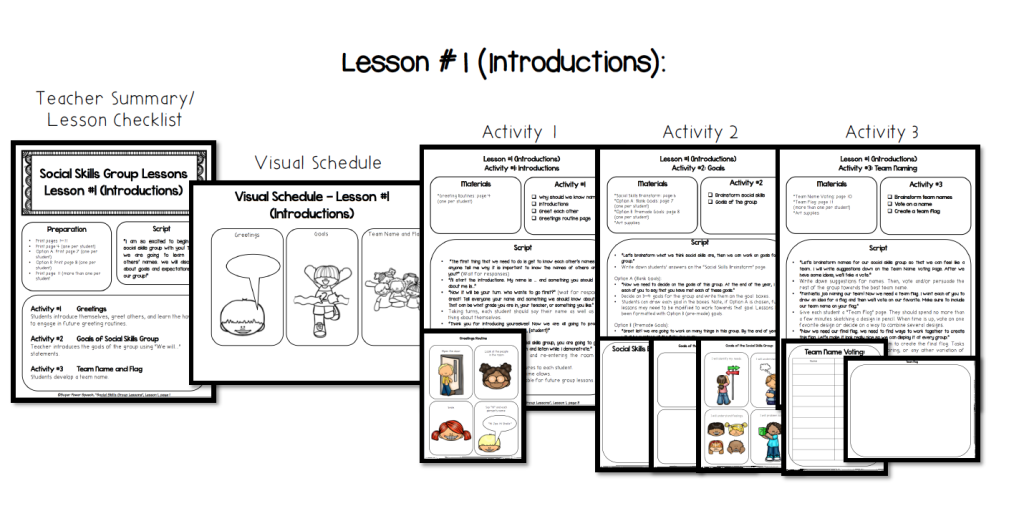
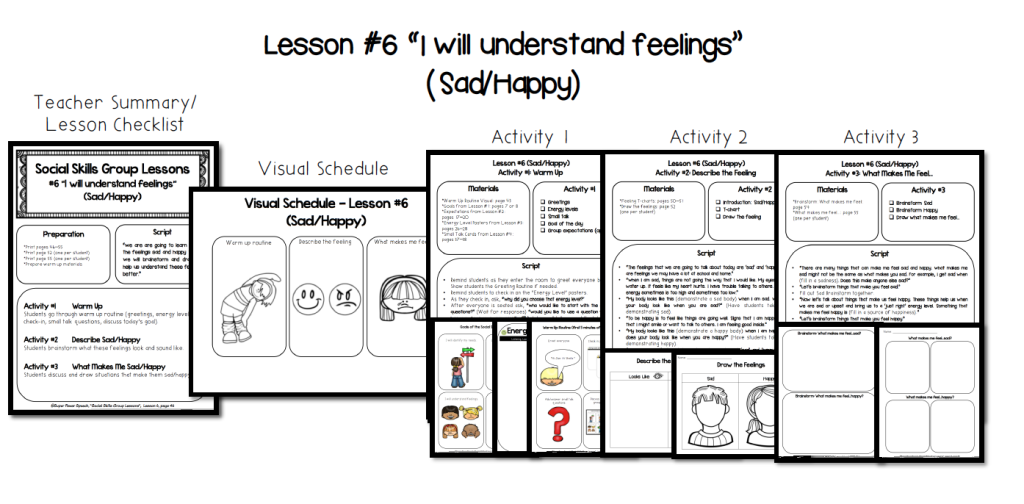
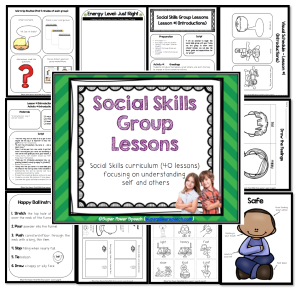
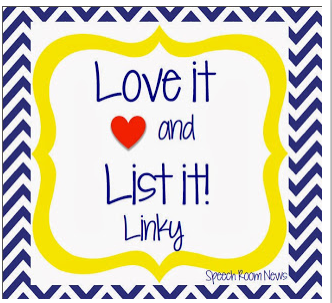
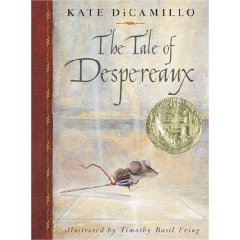

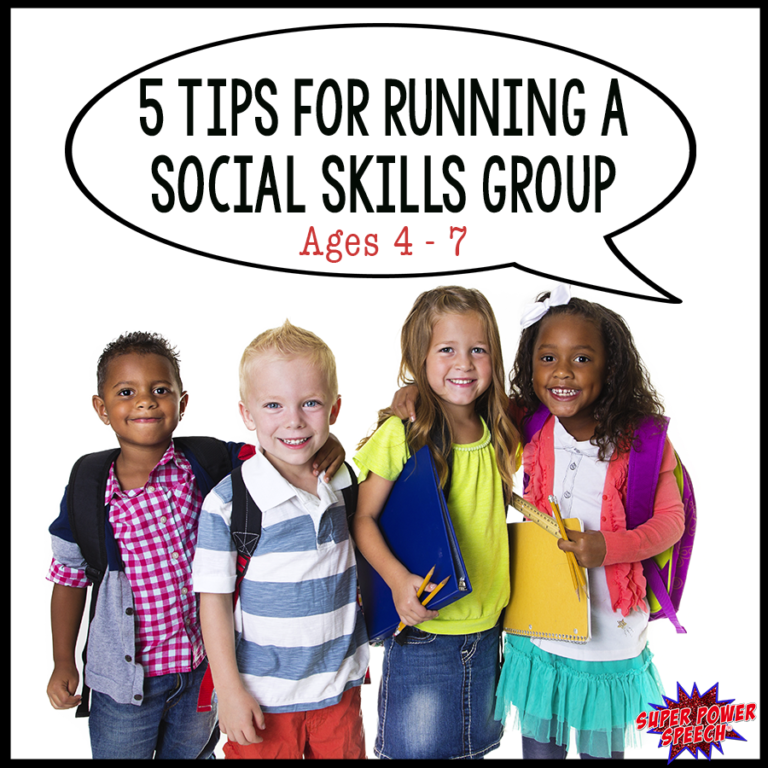

I want this, I need this and I’m up early this morning to get it, but I don’t see it on TpT
I searched your TpT store, found it, got it and it looks fantastic!
I can’t tell how sophisticated or simple the lessons are. For some of my 5th graders, working on sad/happy may be too low. However, perhaps the problem solving will be more challenging, but I couldn’t tell from your presentation. Could you elaborate a little more?
Did you watch the video? It might give you the information that you are looking for. The happy/sad is the easiest and then it gets harder. There are 40 lessons so there is plenty to choose from.
I liked your article and hope this will help my kid also to develop social skills faster. I like the point 3 and 4. (Give students tools to self-regulate, Practice Repeat, Practice Repeat)
Please do you have the curriculum for preschool and kindergarten?
For young children I use my Tilly and Frank curriculum: https://www.teacherspayteachers.com/Product/I-Can-Social-Skills-Lessons-for-Young-Children-1460355
Thank you so much.